Case Study 16 : HOW FUNCTIONAL MEDICINE TREATMENT HELPED A SCHOOL GOING CHILD WHO WAS DIAGNOSED WITH TYPE 1 DIABETES MELLITUS
A school going boy of age 12 years approached us after getting diagnosed with Type 1 diabetes mellitus and was put on subcutaneous insulin three times a day. . His mother mentioned he also had issues related to his gut- he was mostly constipated, unable to digest food well, had fungal infection, and was often falling sick.
This was making it difficult for him to cope with school extracurricular activities and academics and in turn was affecting his performance. His mother shared his glucose monitoring chart as below:
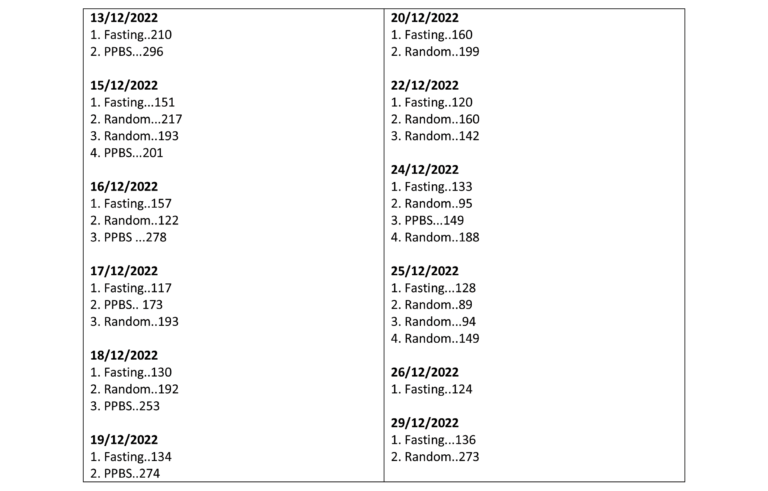
The chart clearly indicates high glucose levels circulating in the blood.
Investigations were done on him to identify the root cause of his issues, his intense investigation plan included full body screening, various test to check his sugar and insulin levels in body, hormone test, LYME, CANDIDA, EBV, comprehensive stool test, test to find his intolerances, metal toxicity and trace minerals tests.
His heavy metal testing revealed high toxicity of cadmium, and mild toxicity of aluminum, lead, silver, barium, and bismuth.
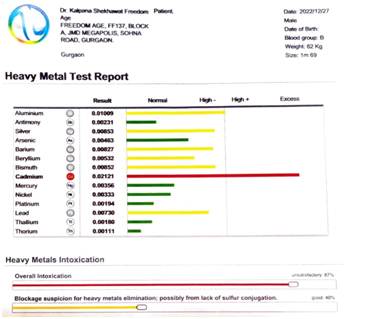
Pic 1: Heavy metal test report
The mineral test report showed low levels of chromium, silicon, phosphorus, and zinc. His global heavy metal intoxication was overall at toxic levels.
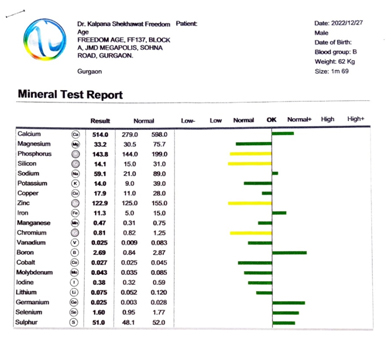
Pic 2: Mineral test report
His blood panel indicates high level of glucose and insulin in blood- HBA1C is 11.8% (optimum is <5.5), glucose fasting- 159.5mg/dL (optimum upto 85), glucose post prandial- 250.4 mg/dL(optimum upto 140) , Insulin Resistance HOMA IR- 6.93 (optimum is <3.8).
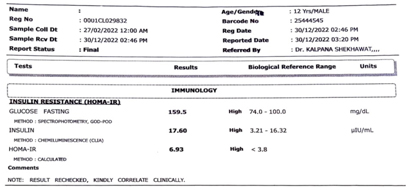
Pic 3: Insulin resistance HOMA report
His thyroid peroxidase antibodies were high @66.60 IU/mL (optimum is upto 60), Vitamin D was insufficient @15.5ng/mL (optimum is 30-100). He was also found positive for Epstein Barr Virus @133U/mL ( negative is <20) and Candida IgG @1.3 (negative is <0.9).
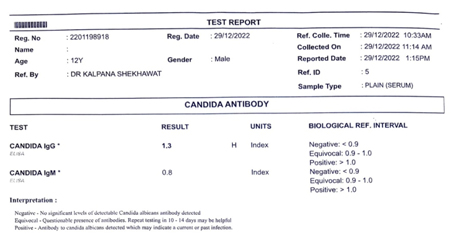
Pic 4 : Candida antibodies report
Comprehensive stool analysis and parasitology report shows positive dysbiotic flora 4+ Klebsiella pneumoniae and 1+ for Candida albicans. Klebsiella is an indicator of poor gut biome.
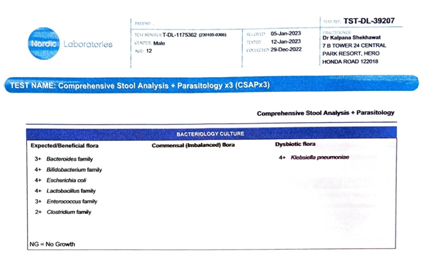
Pic 5 : Stool Comprehensive report
In this specimen the level of calprotectin is moderately high and this is an indicator of inflammatory bowel disease.The concentration of Secretory IgA is abnormaly high due to overgrowth of pathogens which are taxing the gut immune system.
SCFAs may be associated with dysbiosis (including insufficiency dysbiosis), compromised intestinal barrier function (intestinal permeability) and inappropriate immune and inflammatory conditions.
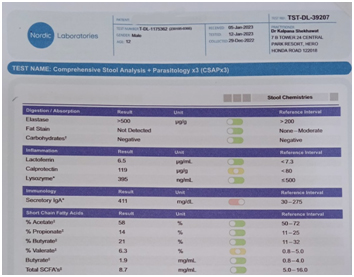
Pic 6 : Stool Comprehensive report
On the basis of the test results and overall assessment, his treatment was started, to remove toxic metals. He was given three intravenous detox and was then put on oral chelators because he had to go back to his hometown to continue his school. He was advised nutraceuticals to level up his deficiencies as per the oligoscan report. He was put on liver cleansing protocol along with candida and parasites cleanse treatment so as to get rid of his growing candida in gut, EBV and other parasitic growth in body. His gut healing protocol included heavy metal detox enemas. A diet plan was made for him considering candida balancing, anti-diabetic diet and food items that will help him in his growing phase of his adolescent period. On visiting their physician he is advised to discontinue insulin as his sugar levels were dropping low. We are very hopeful that in the next few months child will regain his complete health and will perform well in the academic and extracurricular activities.
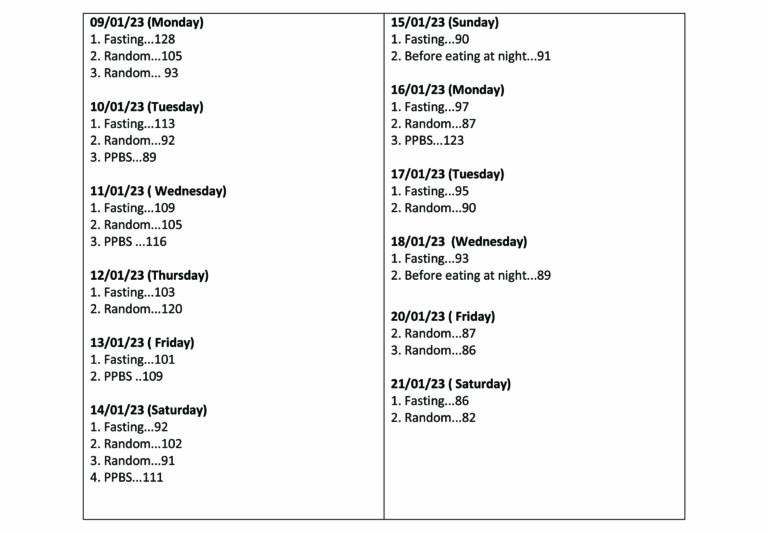
On visiting their physician he is advised to discontinue insulin as his sugar levels were dropping low. We are very hopeful that in the next few months child will regain his complete health and will perform well in the academic and extracurricular activities.
